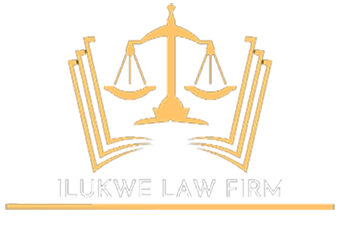Demystifying Types of Incorporation in Canada: Cases, Advantages, and Disadvantages.
Introduction
Selecting the right form of incorporation is a pivotal decision for any business owner in Canada. It not only determines the legal structure of the business but also outlines the responsibilities and liabilities of the owner. This article aims to provide a comprehensive understanding of the various types of incorporation available, outlining their characteristics, advantages, and disadvantages.
Table of Contents
- Sole Proprietorship
- Definition and Characteristics
- Advantages
- Disadvantages
- Partnership
- General Partnership
- Definition and Characteristics
- Advantages
- Disadvantages
- Limited Partnership
- Definition and Characteristics
- Advantages
- Disadvantages
- Corporation
- Definition and Characteristics
- Advantages
- Disadvantages
- Cooperative
- Definition and Characteristics
- Advantages
- Disadvantages
- Non-Profit Organization
- Definition and Characteristics
- Advantages
- Disadvantages
- Advantages and Disadvantages Comparison
Sole Proprietorship
Definition and Characteristics
A sole proprietorship is the simplest form of business organization. In this structure, a single individual owns and manages the business.
• Ease of Setup: Minimal paperwork and legal formalities are required to establish a sole proprietorship.
• Direct Decision-Making: The owner has complete control over all aspects of the business.
• Tax Benefits: Income is reported on the owner’s personal tax return, simplifying taxation.
Disadvantages
• Unlimited Liability: The owner is personally liable for all business debts and obligations.
• Limited Growth Potential: Raising capital can be challenging compared to other forms of incorporation.
Partnership
General Partnership
Definition and Characteristics
A general partnership involves two or more individuals who share responsibilities, profits, and liabilities.
Advantages
• Combined Expertise: Partners bring diverse skills and knowledge to the business.
• Shared Responsibilities: Tasks and decision-making are distributed among partners.
Disadvantages
• Unlimited Liability: Each partner is personally liable for the partnership’s debts and obligations.
• Potential Conflict Resolution: Disagreements among partners may arise.
Limited Partnership
Definition and Characteristics
A limited partnership comprises general partners who manage the business and limited partners who invest capital but have limited involvement.
Advantages
• Limited Liability for Limited Partners: Limited partners are not personally liable for the company’s debts.
• Attracts Passive Investors: Limited partnerships can be appealing to investors seeking reduced involvement.
Disadvantages
• Limited Control for Limited Partners: Limited partners typically have no say in management decisions.
• Potential Conflicts: General and limited partners may have differing interests.
Corporation
Definition and Characteristics
A corporation is a distinct legal entity separate from its owners, providing limited liability and perpetual existence.
Advantages
• Limited Liability: Shareholders’ personal assets are protected from business debts and liabilities.
• Access to Capital: Easier to raise funds through the issuance of stocks.
• Perpetual Existence: The corporation continues to exist even if shareholders change.
Disadvantages
• Complex Setup: Requires detailed legal processes and paperwork.
• Double Taxation: Profits are taxed at both corporate and individual levels.
Cooperative
Definition and Characteristics
A cooperative is collectively owned and operated by its members, who share in decision-making and profits.
Advantages
- Shared Decision-Making: Members have an equal say in the business’s operations.
- Community Focus: Cooperatives prioritize the needs of their members and communities.
Disadvantages
- Limited Access to Capital: Raising funds can be challenging compared to other structures.
- Potential Conflict Resolution: Decision-making can be time-consuming due to consensus-building.
Non-Profit Organization
Definition and Characteristics
A non-profit organization operates for charitable, educational, or community service purposes rather than to generate profits.
Advantages
- Tax Benefits: Non-profits often receive tax exemptions.
- Fulfillment of a Mission: Non-profits serve a specific purpose or cause, often with a strong sense of purpose.
Disadvantages
- Limited Revenue Streams: Rely heavily on donations, grants, and limited business activities.
- Resource Constraints: Can face challenges in funding and staffing, impacting operational capacity.
Advantages and Disadvantages Comparison
After exploring the various types of incorporation, it’s essential to weigh their respective advantages and disadvantages to make an informed decision that aligns with your business goals and vision.
Conclusion
FAQs
1. What is the most common form of incorporation in Canada?
• The most common form of incorporation in Canada is the Corporation due to its benefits of limited liability and ease of raising capital.
2. Can a sole proprietorship be converted into a corporation later?
• Yes, a sole proprietorship can be converted into a corporation at a later stage to enjoy the advantages of limited liability.
3. What is the main advantage of a cooperative?
• The main advantage of a cooperative is the shared decision-making and the community-focused approach to business.
4. Are non-profit organizations exempt from all taxes?
• Non-profit organizations may be eligible for tax exemptions, but they are not exempt from all taxes, especially those related to certain business activities.
5. Is a partnership suitable for high-risk ventures?
• A partnership may not be the best choice for high-risk ventures due to the unlimited liability of partners. Limited partnerships may be a more suitable option.
